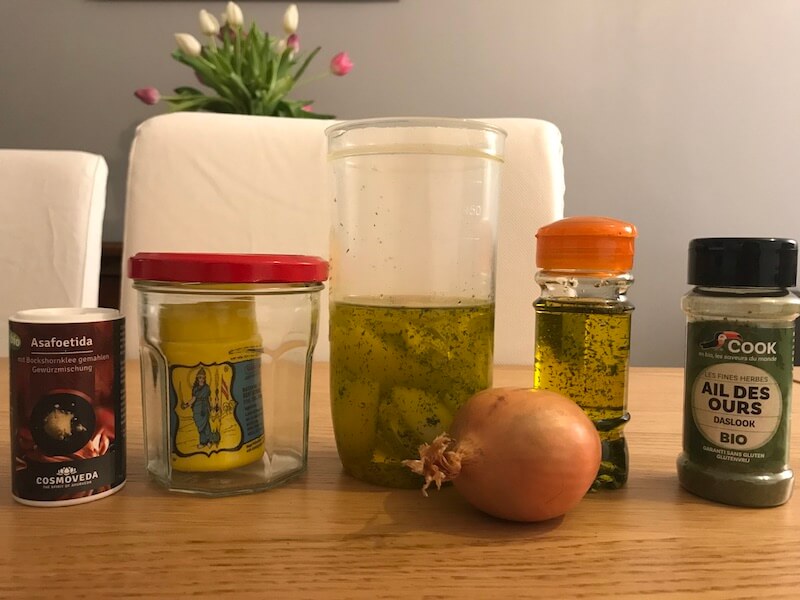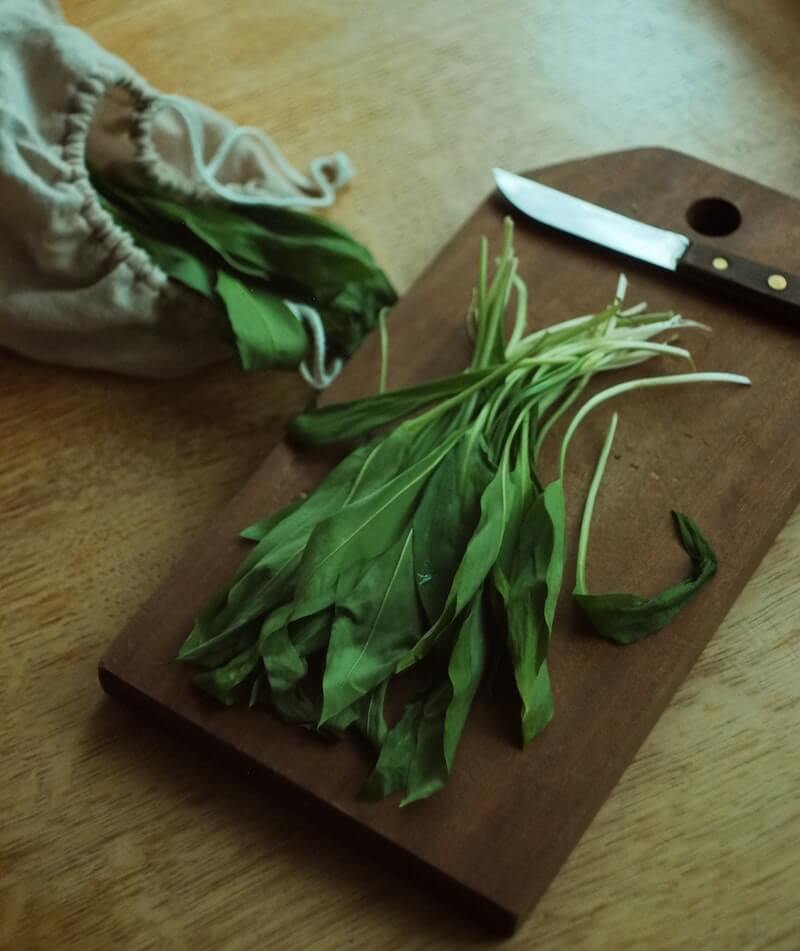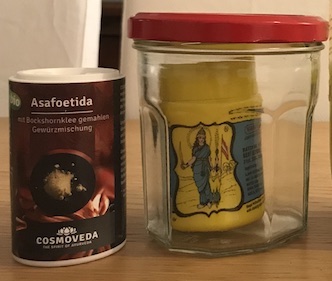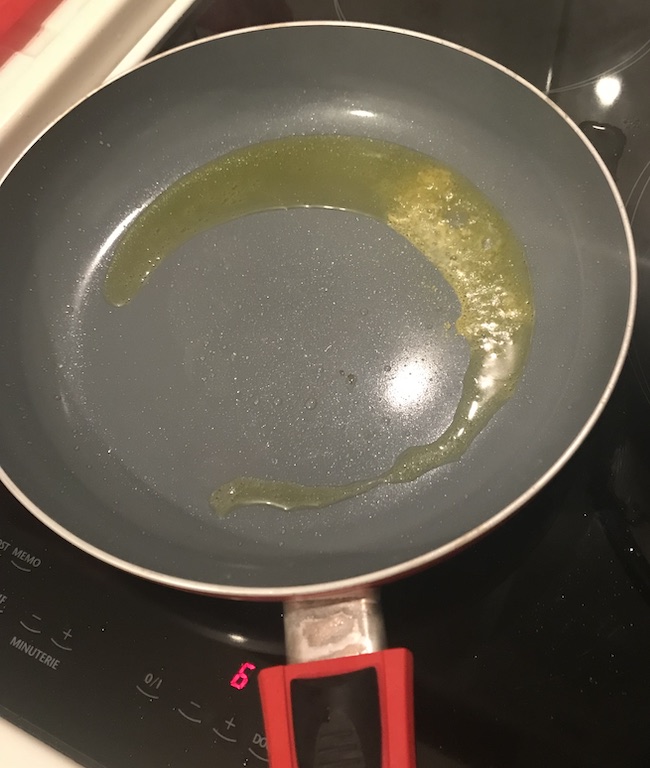Updated October 27, 2023.
Let’s face it, we all miss the rich taste of garlic, onions and shallots. However, there are several alternatives that can help you get the same taste in your cooking.

I’ll explain three ways you can add onion flavoring to your cooking:
- Infused oils (which can easily be prepared at home)
- How to use garlic or onion directly in the pan (details are important, read on for more instructions!),
- Similar-tasting substitutes
1. Infused oils
Infused oils can give your recipes a taste. You can either buy the oils ready-made, or make them yourself. But if you’re infusing your own oils, it’s important to be aware of the risks: most importantly: botulism.
Botulism is a rare but fatal disease that can develop in homemade aromatic oils if you don’t prepare them properly or leave them on the shelf for too long. If you’re preparing your own oils, follow instructions carefully and make sure to follow strict kitchen hygiene.
a) Non-cooking method
- Find a container with a wide enough neck, or use a glass jar (a Tupperware, for example), or a small vinaigrette shaker.
- Fill the container with 1 cup of olive oil.
- Assemble your vegetables. For garlic oil, I recommend 3 cloves of garlic. For onion oil, use a large onion.
- Peel and chop the garlic, onion or shallot into large pieces (you can mix them if you like, or just use one ingredient). Remove any sprouts. Put the chopped vegetables in the container.
- Let sit for 3 days, then keep in the refrigerator (necessary) and consume within 7 days (also necessary, because of the risk of botulism).
- ALTERNATIVE: Let it rest for a week to get a stronger taste. The shelf life will decrease to 3 days (always store in the fridge).
- When the garlic or onion has finished infusing, remove the vegetables completely. You can also leave them there if you’d like a stronger taste.
- It’s ready! Use the oil for cooking or seasoning 😊.
b) Cooking method
- Find a container with a wide enough neck, or use a glass jar (a Tupperware, for example), or a small vinaigrette shaker.
- Fill the container with 1 cup of olive oil.
- Assemble your vegetables. For garlic oil, I recommend 3 cloves of garlic. For onion oil, use a large onion.
- Peel and chop the garlic, onion or shallot into large pieces (you can mix them if you like, or just use one ingredient). Remove any sprouts. Put the chopped vegetables in the container.
- 3 days, then keep in the refrigerator (necessary) and consume within 7 days (also necessary, because of the risk of botulism).
- ALTERNATIVE: Let it rest for a week to get a stronger taste. The shelf life will decrease to 3 days (always store in the fridge).
- When the garlic or onion has finished infusing, remove the vegetables completely. You can also leave them there if you’d like a stronger taste.
- It’s ready! Use the oil for cooking or seasoning 😊.
Make sure to consume within three days. ☠️
c) Freezing
Here’s another trick: you can also store your oils in the freezer indefinitely (and make larger quantities at once!) The taste may deteriorate over time, though.
My tip: I pour the oil into an ice cube tray, so I can easily take out one, two or three ice cubes as needed!
d) Buying oils in shops
Infused oils are often hard to find in retail stores, but you can find many varieties online.
This article explains why it’s hard for those with IBS to find the right oils for our diet. Often other flavorings and additives can make it difficult to determine the exact composition of a store-bought infused oil.
Although additives are rarely a problem for those following the FODMAP diet, they are not recommended either.
The limits of cooking with infused oils
- Infused oils work relatively well for stronger flavors like garlic, though I personally find that the oils aren’t as effective in reproducing the flavor of onion or shallot. Do your own tests at home!
- When cooking food overheat, the taste is not very pronounced, even for garlic oils. I recommend using the cold-infused oil to season a cold salad of green beans and potatoes, for example!
2. Cook in the pan
When you don’t have ready-made oil on hand, you can also use the “pan” trick.
Heat oil in a frying pan. Add garlic or onion — nothing else.
Fry for a few minutes and then remove the garlic or onion: the hot oil will have taken on the flavor. Now when you cook other foods in this oil, they’ll also be infused with the garlic/onion flavor.
Why is it allowed and why does it work?
This method works with the FODMAP diet because the garlic or onion taste will be transmitted to the oil, but not the fructans and GOS that are bad for us. They remain in the vegetable, which is discarded at the end and therefore not ingested. Fructans and GOS are not liposoluble, which means they do not pass into oil.
CAUTION!
On the other hand, these FODMAPs are water-soluble: they do dissolve in water!
That means you should never cook onions or garlic at the same time as other vegetables. You also shouldn’t put garlic in the oven to roast with other food, even if you do remove it at the end. The FODMAPs can dissolve in water contained in other ingredients.
3. Substitutes
Chives
This herb has a slight onion taste. I like adding this to salads or as a garnish over other meals.
Green onions
They come by many names: green onions, scallions, spring onions, or salad onions.
Even though the white part is too high in FODMAPs, the green part is low in FODMAPs and also has an onion taste that can be delicious when chopped and sprinkled on top of your favorite recipe.
Wild garlic
Wild garlic is a flowering plant that is different from traditional garlic bulbs that you find in the grocery store. You can buy the plant fresh or in dry/powdered forms. I recommend fresh over powdered, which — as with most spices — will provide a stronger taste.
While you can grow wild basil, it’s not easy. The easiest option is to find it in a market or specialty produce seller near you.

Photo by Anna Auza on Unsplash
Asafoetida

Asafoetida, also called hing, is a dry resin extracted from the roots of the Ferula plant.
It’s commonly used in Indian cooking. You’ll notice I’ve locked the yellow jar in its own container. That’s because the smell of asafoetida is absolutely awful. It’s… indescribable. (The name makes more sense now, right? Foetida = fetid…)
This powder is often used to replicate the taste of garlic and onion in cooking. The smell disappears during cooking:

To incorporate asafoetida into your cooking, add a pinch of the powder into hot oil, stir for 15-20 seconds in your pan, and then add other spices and foods. It’s that simple!
But a quick warning: don’t make the same mistake as I did by buying the Cosmoveda brand of asafoetida (the jar on the left in the photo). Cosmoveda’s powder is mainly composed of fenugreek and contains very little asafoetida.
Other spices
If all this seems intimidating at first, don’t worry: get used to eating without garlic and onion. Don’t get me wrong: you might miss it a lot at first. But you’ll learn how to make your cooking more flavorful by adding spices, most of which are low in FODMAPs.
Have you done your reintroduction tests?
- If fructans are not a problem for you, then you can reintroduce garlic, shallot and red onion.
- If GOS AND fructans are not a problem: lucky you! You can reintegrate onions into your diet.
I hope these tips will help you to bring new flavor to your cooking!
Get your old life back
Get rid of your Irritable Bowel problems by succeeding with your FODMAP diet, thanks to the most comprehensive FODMAP food database, Fodmapedia.


Thank you for your information on onions and garlic – it has been incredibly useful! Maria
You’re very much welcome!
is it ok to caramelize onions and then strain and use the oil?
Great question — and unfortunately, no, caramelizing onions and then straining the oil isn’t safe on a low-FODMAP diet.
When onions cook (especially long enough to caramelize), they release water. Fructans are water-soluble, so they inevitably dissolve into the liquid that comes out of the onion during cooking. Even if you strain the pieces afterward, some of that liquid mixes with the oil, which means fructans end up in the final mixture.
This is why the only safe method is to cook onions or garlic in pure oil, without any other ingredients, and remove them to only use the infused oil.
So: caramelizing = too much water release = not FODMAP-friendly.